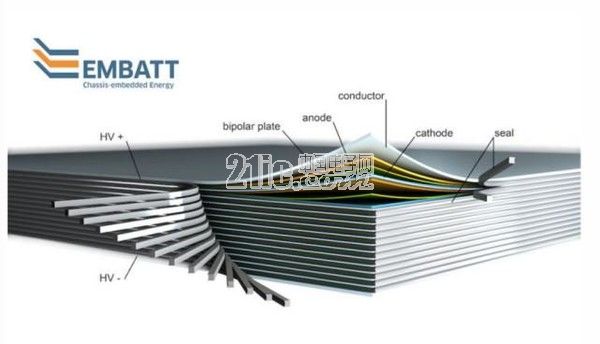Instead of encapsulating the outer casing of a single battery, the scientists replaced the cylindrical design with a sheet-like design. The metal sheet is coated with an energy storage material, and one side of the positive electrode is a negative electrode. According to the AAA report, American drivers drive an average of 30 miles (48 kilometers) a day. Although electric vehicles charge three times as long as three times the number, many people are reluctant to buy.
This article refers to the address: http://

This is the so-called "mileage worry" problem. Gasoline cars still dominate the road. Mileage concerns are one of the main reasons, but a team of scientists tried to solve this problem.
Mareike Wolter, project manager for mobile energy storage systems at Fraunhofer-Gesellschaft, is working with a team to research a new battery that can charge an electric car for 620 miles (1000 km).
Walter said that the project was launched three years ago, when the German Industrial Technology Institute and researchers with ThyssenKrupp System Engineering and IAV Automotive Engineering gathered to discuss how to improve the energy density of automotive lithium batteries. . They turned their attention to the popular all-electric car Tesla and began research.
Tesla's latest model, the Model S 100D, is equipped with a 100 kWh battery pack with a cruising range of approximately 335 miles (540 km). The battery is large, about 16 feet long, 6 feet wide, and 4 inches thick. The battery pack contains 8,000 lithium-ion cells, each housed in a cylindrical housing that is approximately 2-3 inches (6-7 cm) high and 0.8 inches (2 cm) in diameter.
Walter told Live Science: "We thought at the time that if the space used was the same as the Tesla battery, but the energy density is higher and the cruising range can reach 1000 kilometers, that would be a great thing."
She believes that there is a way to achieve the goal, which is to optimize the battery material and let it store more energy; in addition to this, there is another way to improve the overall design of the system.
Approximately 50% of the space in each cell is occupied by components such as the outer casing, the positive pole, the negative pole, and the electrolyte (a liquid that moves the charged particles). If you need to install the battery into the car, you need more space because you need to connect the battery to the car's power system. "
This design wastes space. Walter said, "There are many inactive components in the system. In our opinion, this is a problem." â€
So, scientists decided to adjust the overall design of the battery. What to do? The scientist removed the outer casing of the packaged battery and replaced the cylindrical design with a sheet design. The metal sheet is coated with an energy storage material made of powdered ceramic and a polymeric binder. One side of the metal piece is a positive level and the other side is a negative electrode.
The researchers stacked the so-called bipolar electrodes one by one, like stacking sheets of paper, separated by a thin electrolyte, and a material inside to prevent charge shorts. The scientists then packaged the stacked sheets in a size of about 10 square feet (1 square meter) with the upper and lower parts connected to the car's electrical system.
The ultimate goal of scientists is to develop a battery system that is the same size as a Tesla or other electric car. Walter said: "In the same space we can put more electrodes and store more electricity." She also said that the researchers' goal is to test the system on the car before 2020.
Solar Panel,Portable Big Power Bank,Lithium Batteries Power Station,Portable Battery Powered Generator
Guangzhou Fengjiu New Energy Technology Co.,Ltd , https://www.flashfishbatteries.com